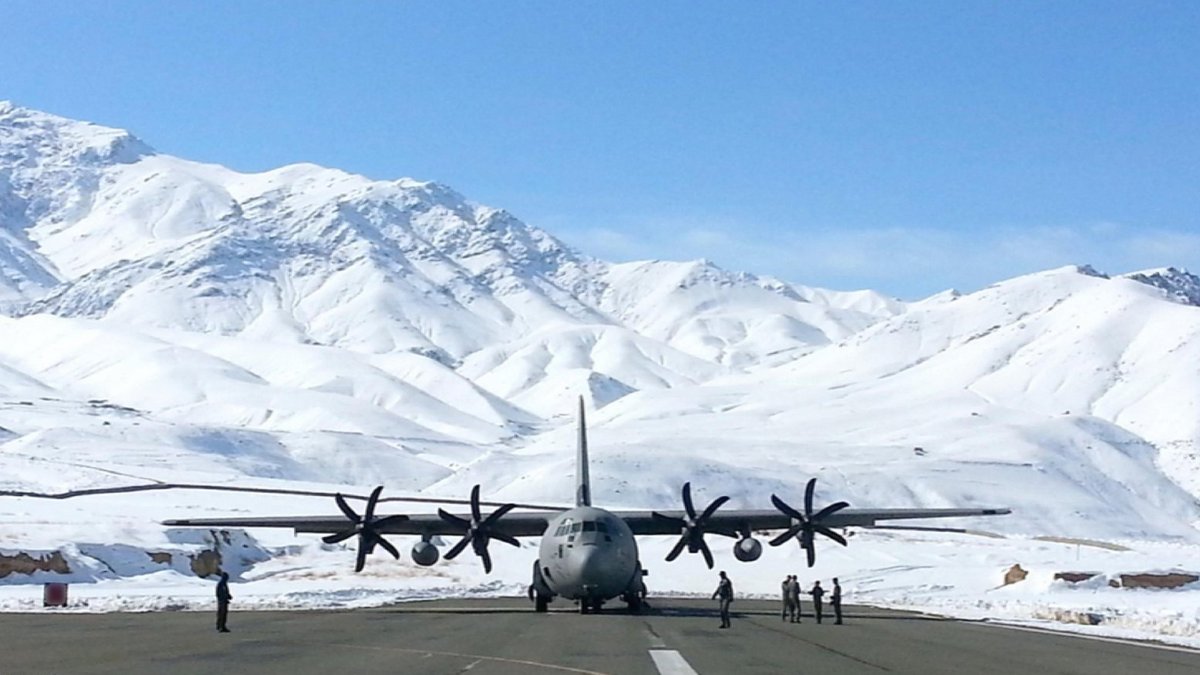
Indian Air Force – Game Changers in the Current Geo Strategic Scenario

“The one who controls Aerospace will control the planet Earth” was well established by the 1950s. The major powers began spending greater sums on aerospace. Air offers speed, range, accuracy, and lethality for achieving military effects. Air power and future of all warfare are intertwined. Air superiority, will still be a pre-requisite for all operations on the surface to succeed. Air began influencing outcomes of all wars, and played major role in the Indo-Pakistani wars, Arab-Israeli wars, the Falkland, Kosovo, Iraq, Afghanistan, among many others. China has made huge investments in aerospace assets.
In the recent India-China showdown in Ladakh, Indian Air Force’s (IAF) transport fleet played a very important role by flying in operational and maintenance assets into relatively remote regions. The helicopters have been active in inter valley transfers and replenishments or hill tops. Satellites and UAVs have been providing Intelligence, Surveillance, and Reconnaissance (ISR). Fighters and attack helicopters are all geared for offensive missions. IAF’s C-130 have flown practise missions for para drop.
Current State of IAF
The IAF has 32 fighter squadrons. These broadly include two of Rafale, 12 Su 30MKI, four MiG 21 Bison, three each of MiG 29 and Mirage 2000, six of Jaguar, and two of LCA. IAF’s induction of Rafale fighters will enable it to maintain air superiority over China’s J10, J11, and Su-27 fighter jets. Armed with very long-range Meteor and MICA beyond visual range (BVR) air-to-air missiles, the Rafale fighters are expected to pose a significant threat to Chinese aerial assets. The Sukhoi Su-30MKI serves the IAF as the primary air superiority fighter with the capability to perform air-to-ground strike missions. With 11 C-17 and C-130 each, 17 IL-76, and over 100 upgraded An-32, IAF has significant cargo and troop lift capability. Similarly, having inducted 15 Boeing Chinook heavy-lift and 22 Apache AH-64E attack helicopters, and with already a significant fleet of 240 Mi-17 series medium-lift helicopters and nearly 100 ALH variants and smaller Chetak/Cheetah fleets, IAF is in a good position for rotary wing assets. IAF has only three large AWACS aircraft and two indigenous DRDO developed AEW&C aircraft. Similarly IAF has only six IL-78 Flight Refuelling Aircraft (FRA). Both these fleets are highly inadequate for a continental size country like India which has also to cover the Indian Ocean Region.
India has a well-covered and integrated air defence (AD) radar foot-print. IAF continues to operate some of the legacy surface-to-air missile systems like the SAM-3 Pechora and SAM 8 OSA-AK. With the induction of a large number of indigenous Akash AD systems, and also, to arrive by November 2021, five S-400 systems from Russia, the AD coverage will be significant. To cover the large Chinese border, more systems will need to be inducted. With induction of the MICA, Meteor, Astra, SCALP, BrahMos and Hammer, among others, IAF has a significant aerial weapons inventory.
The future is unmanned. Artificial Intelligence supported autonomous systems will fly independently or in conjunction with each other in a swarm or with manned aircraft as a team. IAF has significant number of UAVs. More are being developed indigenously or being acquired.
Air Delivers Strategic Effects
Air power is inherently strategic in nature and best used as an offensive element. It provides conventional deterrence. Air Campaigns can be executed simultaneously against different spread out target systems. It can provide both kinetic and non-kinetic options with pin point accuracy. Precision air weapons have redefined the meaning of mass. Whoever controls the air generally controls the surface. Air influences outcomes and actions of the surface forces. Technology and air power are integrally and synergistically related. IAF is responsible for air defence of India. IAF’s Counter Air missions are designed to ensure defence of India and of our surface forces. IAF’s strategic airlift allows strategic reach and strategic effects. Advantage of air power is the ability to exploit swing-role capabilities. When you say Rafale is an Omni Role fighter, means it can do many roles in a single mission. ISR has become even more crucial for decision-superiority in net-centric warfare. Air power is best suited for it.
The Growing PLAAF
China’s People’s Liberation Army Air Force’s (PLAAF) has a mammoth fleet of fighter aircraft and advanced air defence systems. Of its nearly 1,700 fighter/bomber aircraft, over 800 are 4th generation plus. PLAAF already has around 40 fifth-generation J-20 fighters, and targets to have 200 of these by 2027. Meanwhile, the FC-31/J-31 development is being accelerated. PLAAF has a strategic bomber fleet with 120 H-6 bomber variants, each carrying six cruise missiles. They also have relatively larger numbers of AWACS and FRA. China has an edge with a huge surface-to-surface missile force. China’s biggest strength is its indigenous aircraft industry that produces all types of aircraft and advanced helicopters. China has a huge indigenously built UAV fleet. China also has significant maritime air power, with PLA Navy (PLAN) having two operational aircraft carriers and nearly 600 aircraft. Two more carriers are under construction and two further, larger ones, on drawings boards. It can be seen that China has significant air power.
IAF’s Global Reach
IAF is looking at reach from the Persian Gulf to the Straits of Malacca, using long range aircraft supported by FRA and AWACS. More of these are being acquired. More airfields are becoming operational in the southern peninsula, and in Andaman and Nicobar Islands. This along with in-flight refuelling will add to the reach. The Lakshadweep islands are also being developed strategically. IAF is regularly exercising and increasing interoperability with major air forces of the world.
Joint Operations
For the surface and sub-surface forces campaign to succeed, certain amount of dominance of the air is a prerequisite. IAF would have to ensure that. Air interdiction missions will knock off adversary’s tactical and logistic means. These will be very crucial in the mountains. Battlefield support missions by ground attack aircraft and attack helicopters will make the difference in the tactical battle area. Transport and helicopter fleets will provide logistics support which is crucial in the mountainous areas. IAF has significant maritime attack capability.
Operational Capabilities Vis-à-vis China
IAF is very well placed with nearly 25 airfields capable of launching operations against China. China effectively has three airfields close to Eastern Ladakh, and around eight in Tibet. They are trying to upgrade infrastructure but have disadvantage of very high altitude. IAF will be able to launch much larger number of missions. For long, India’s military assets and infrastructure were Pakistan border centric. This is fast changing, for both infrastructure build up and assets position. While border roads and connectivity are being improved, IAF has upgraded its Advanced Landing Grounds (ALG) near China border. All IAF airfields are getting hardened aircraft and equipment shelters. IAF now has significant number of Su-30 MKI squadrons facing China. Also the new acquisitions like Rafale, C-130 J, Chinook and Apache helicopters have all been located in the eastern sector. The same is also applicable to air defence systems and weapons positioning.
Important Technologies India Must Master
India needs to invest more in game-changer technologies. These include cyber and electronic warfare, artificial intelligence, unmanned systems, hypersonic, among others. Hypersonic flight and weapons will be difficult to engage. They will act as force multipliers against high-value targets. There is a lot of action in Directed Energy Weapons. Lasers that can burn incoming missile electronics or dazzle electro-optical sensors. For India to become significant, it must also master aircraft engine, and AESA radar technologies. Joint venture route is the best to imbibe high-end technologies. We need very long range weapons, including aerial missiles with around 400 kilometres ranges. Similarly air-launched cruise missile with ranges of around 1,500 kilometres.
Way Ahead IAF
The IAF could reach 42 squadrons earliest by around 2038 provided the development of indigenous LCA variants, and Advanced Medium Combat Aircraft (AMCA) are accelerated. IAF would still need to buy around six squadrons of medium fighters from broad. IAF must also target to have 8 large and 10 smaller AWACS, at least 12 FRA aircraft. These numbers must be achieved before 2030. IAF must have by then a significant fleet of UCAV systems, including the indigenously developed DRDO UAVs. IAF should also have a large inventory of aerial missiles with longer ranges including the later variants of BrahMos and Astra missiles.
India has also to defend itself against a possible sizeable Chinese surface-to-surface missile (SSM) attack. We need more air defence SAM systems of the S 400 and Iron Dome class, and the many indigenous air defence systems India is working on, including some in JVs with Israel. It is important to have a larger ammunition and missiles stocking, including of SSMs and Cruise missiles. India has a good missile program. The Prithvi, Agni, BrahMos, Akash and Astra missiles are a success, and newer variants must be hastened. Electronic and cyber warfare capability is going to be important. More needs to be done on this score.
**********************
Disclaimer
The opinions expressed in this article are the author’s own and do not reflect the views of Chanakya Forum. All information provided in this article including timeliness, completeness, accuracy, suitability or validity of information referenced therein, is the sole responsibility of the author. www.chanakyaforum.com does not assume any responsibility for the same.
Chanakya Forum is now on . Click here to join our channel (@ChanakyaForum) and stay updated with the latest headlines and articles.
Important
We work round the clock to bring you the finest articles and updates from around the world. There is a team that works tirelessly to ensure that you have a seamless reading experience. But all this costs money. Please support us so that we keep doing what we do best. Happy Reading
Support Us





















POST COMMENTS (1)
Mukesh.Naik